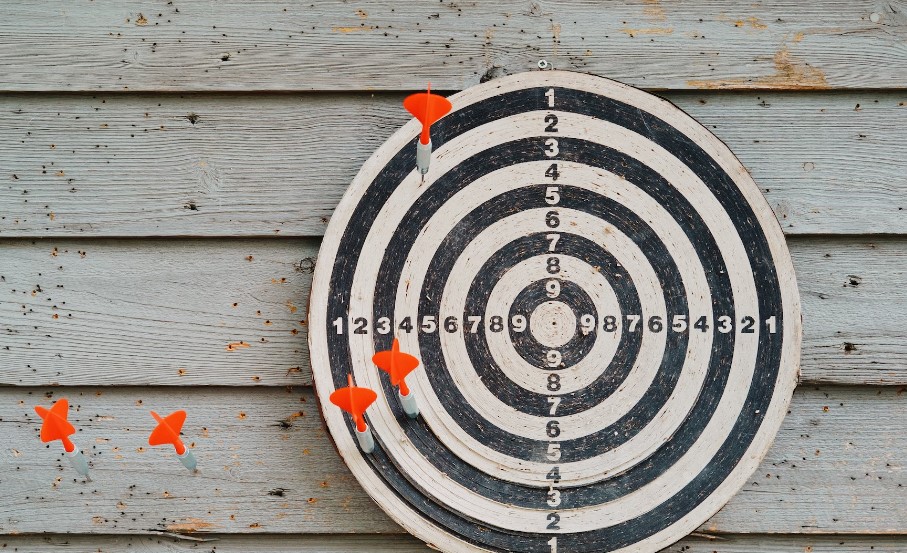Darts is a beloved pub game that has enthralled players for generations with its straightforward yet tactical gameplay. While the rules may seem simple initially, properly tracking scores during a fast-paced darts match can prove challenging for beginners. This comprehensive guide breaks down the key essentials around scoring in the exciting game of darts.

Setting Up the Scoreboard
Before a dart game commences, players first need to setup a scoreboard to record points from dart throws. While electronic scoreboards have become ubiquitous in professional tournaments seen on TV, the traditional manual chalkboard or whiteboard remains commonplace in recreational settings like bars and homes. Typically, such a scoreboard outlines each player’s starting score, usually 301 or 501, with columns to track remaining scores racing downwards to zero. Even a basic notebook, dry erase board, or paper can also work to tally scores.
The most popular darts games follow an “01” format, where players begin at a preset score like 301 or 501 and subtract the scoring value of each dart thrown until they reach exactly zero points to finish. Manual scoreboards function optimally with columns split into units, tens, and hundreds places to enable easier mathematical point calculations. Clearly labelling the dividing line between the “Player 1” and “Player 2” sections avoids score mix-ups between opponents. With scores written and starting totals in place for each player, the darts battle can commence!
Scoring Points on the Dartboard
The foundation of tallying points in any darts game revolves around knowing the various dartboard sections and corresponding scoring values. The narrow outer band of each board section counts for double a segment’s points value. For example, hitting the outer double ring specifically for the 20 section scores 40 points. The red/green inner circle triples a segment’s base value, making the inner triple 20 worth a hefty 60 points. Hits outside these two rings simply earn the number’s standard value. So a regular outer single 20 scores 20 basic points.
This multiplier zone effect explains why seasoned dart enthusiasts aim carefully for high value triples and doubles rather than randomly scattering darts. An errant dart failing to stick in the board results in zero points for that shot. Additionally, in the rare case a player exceed their remaining score in a single turn, any excess points are not counted. Understanding these subtle scoring nuances assists players in fairly tracking scores after each set of three darts per turn.
Consider the following example table outlining potential scoring outcomes for hits on just the classic 20 section:
| Dart Landing Zone | Scoring Value |
|---|---|
| Outer double ring | 40 points |
| Inner triple ring | 60 points |
| Outer single 20 | 20 points |
The above example demonstrates how double and triple value multipliers dramatically impact scoring potential versus standard number hits, lending clues into strategic dart throwing.
Using Strategy to Finish
A hallmark skill of experienced darts brilliance manifests in a player’s ability to “finish” a game by ending exactly on zero points remaining. As veterans reach the final few scores concluding a game, they strategically aim for doubles or combinations of doubles and triples to hit the coveted zero. For example, with only 32 points remaining, accurately hitting a double 16 would complete the game with a dramatic flourish. Another common finish tactic sees players hitting triple 20 following by double 18 to heroically “check-out” from 74 remaining points. Rather than randomly flinging final darts in hope, analysing the optimal board segments to finish demonstrates a player’s analytical dart prowess.
So, while initially tracking scores may seem perplexing to darts novices, practising the techniques outlined herein builds familiarity over time. Mastering the double and triple multiplier values, accurately subtracting scored points, and tactically aiming darts to finish are the keys to raise one’s dart abilities. Gradually accumulating match experience speeds up mental mathematical calculations to keep pace with the rapid fire action. Soon scoring becomes second nature, allowing anyone to transform into an expert scorekeeper alongside improving their physical dart throwing talents.

